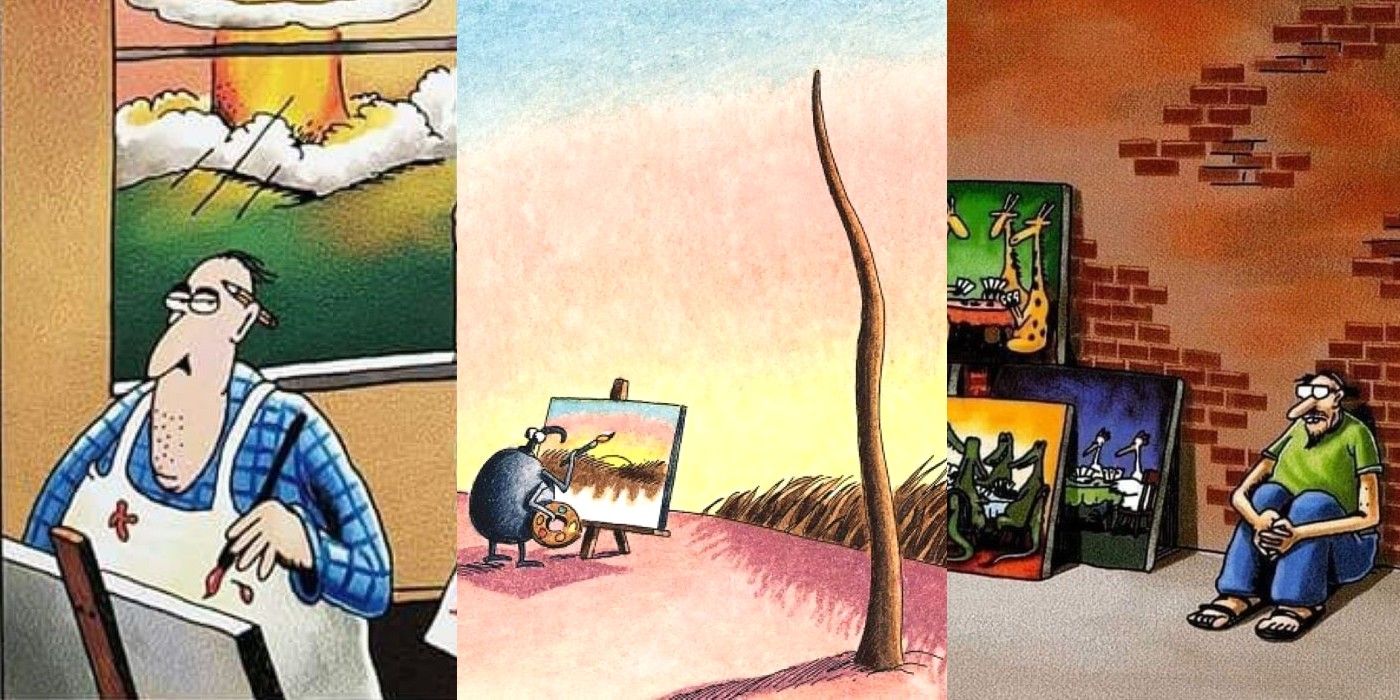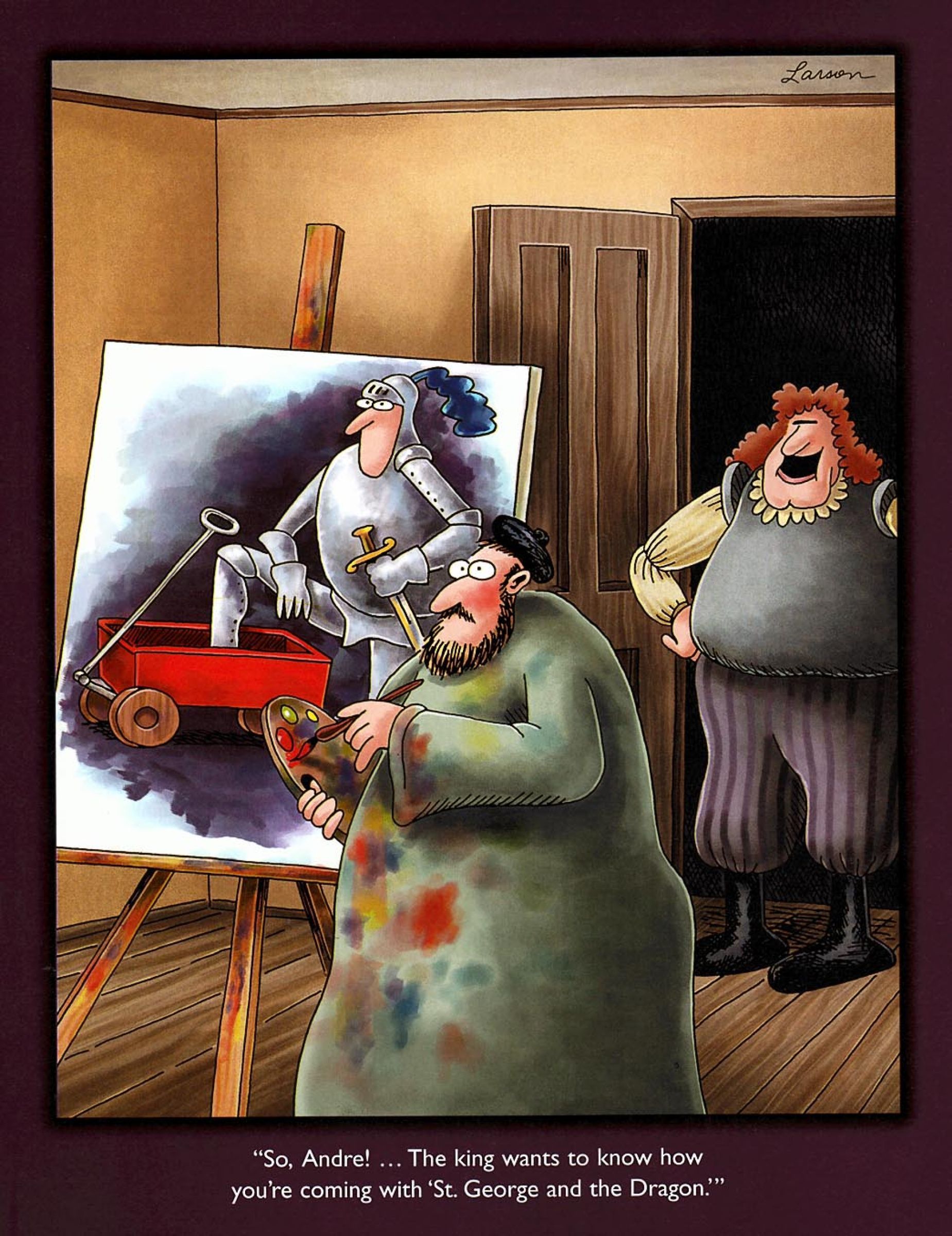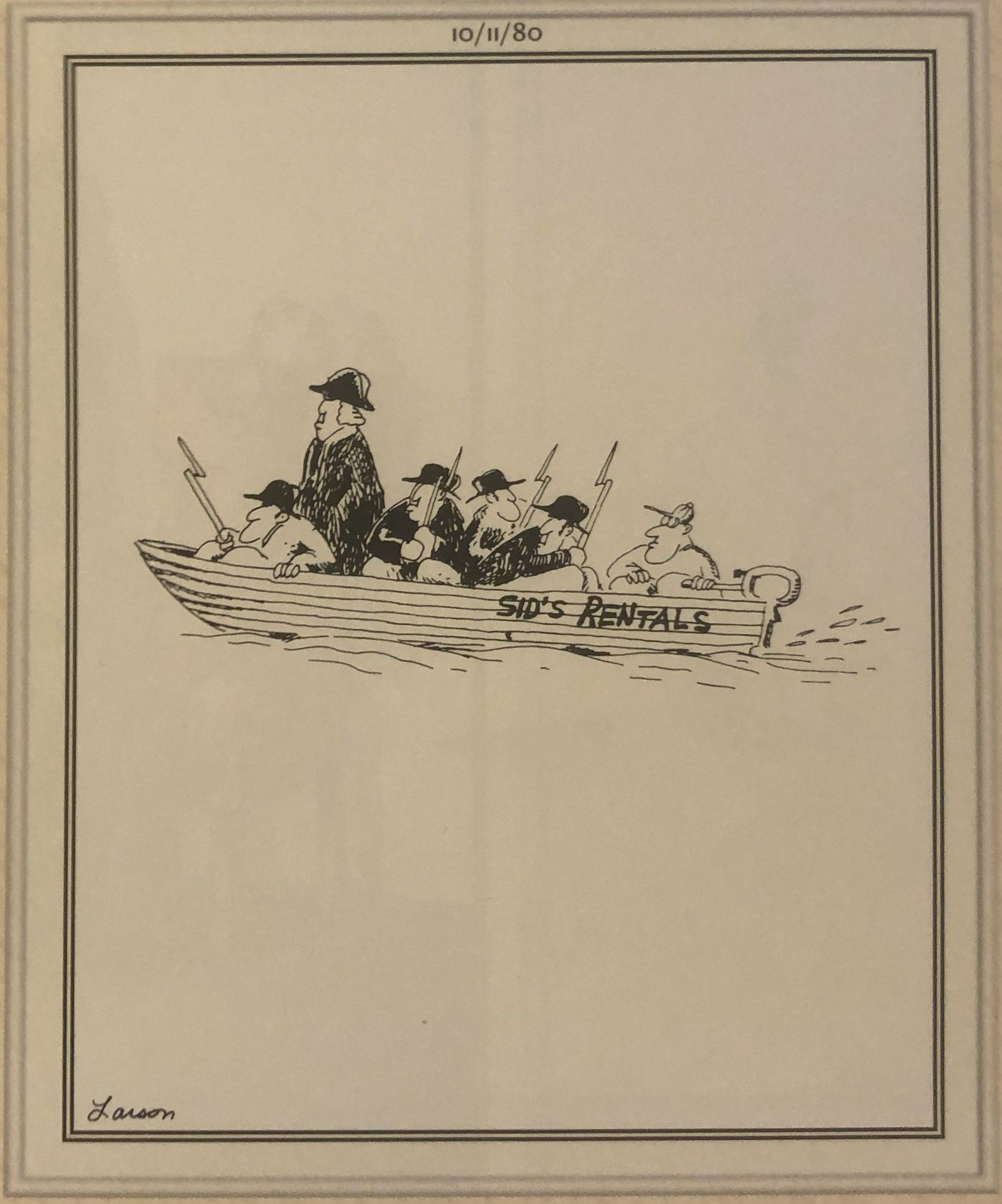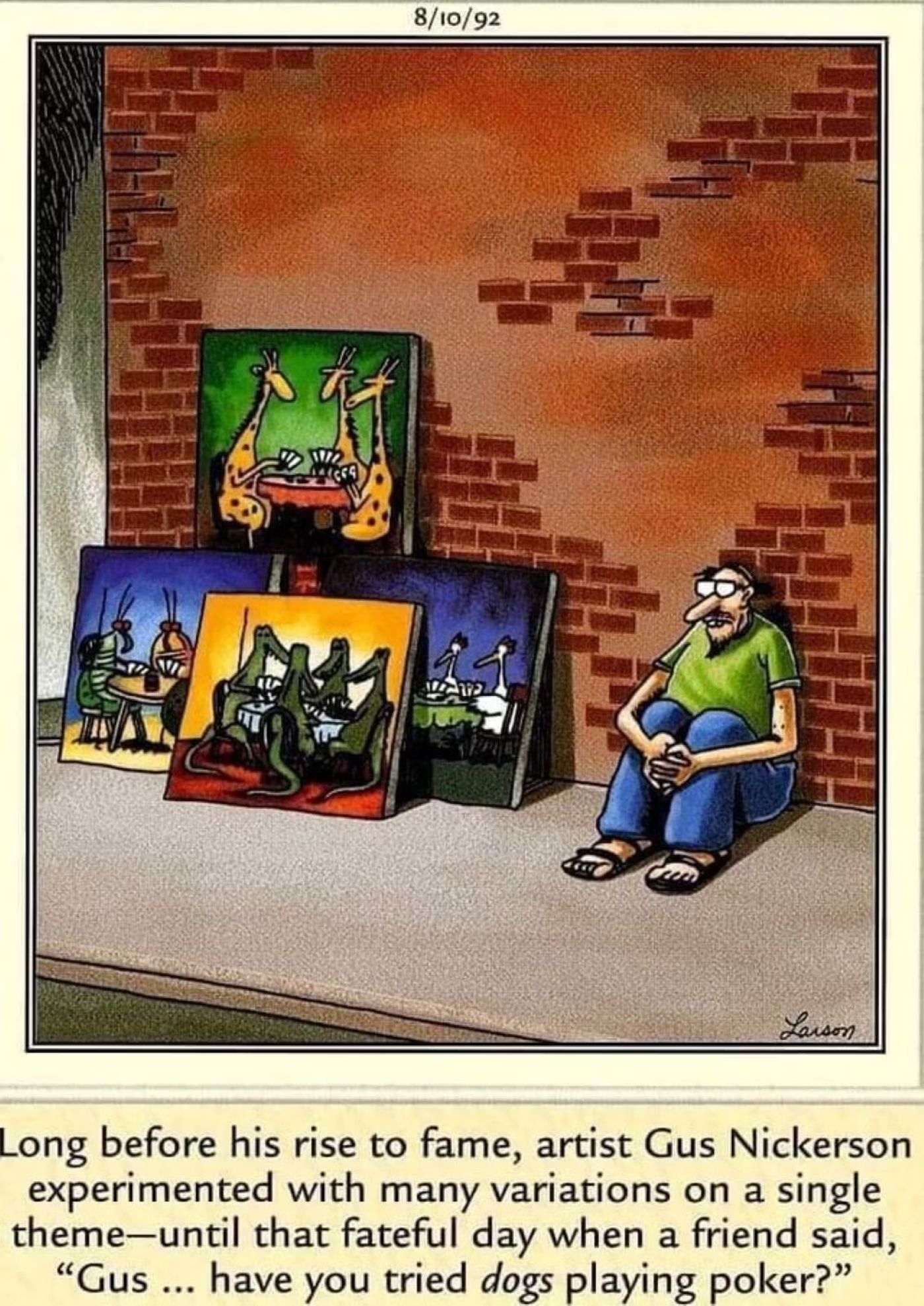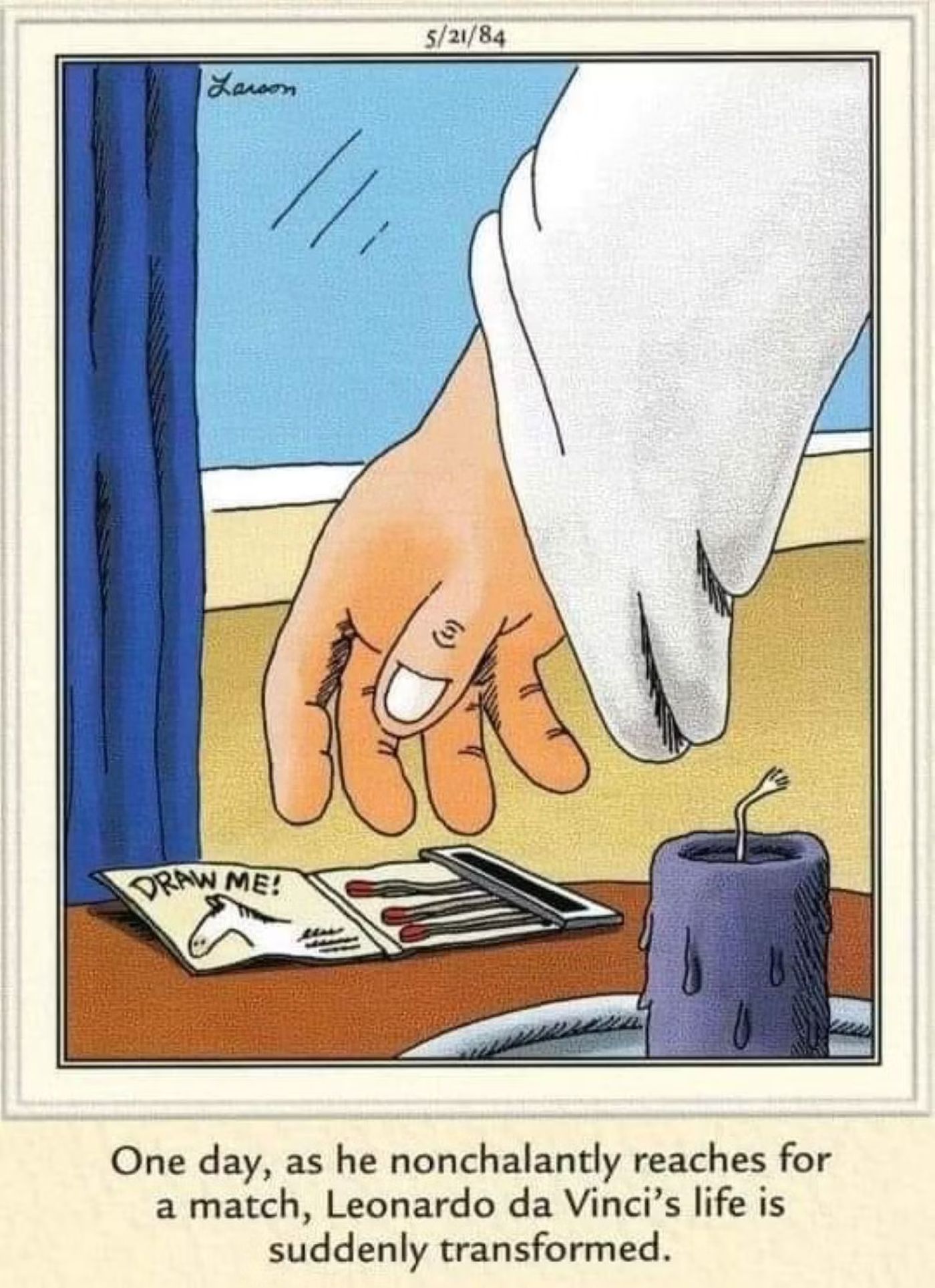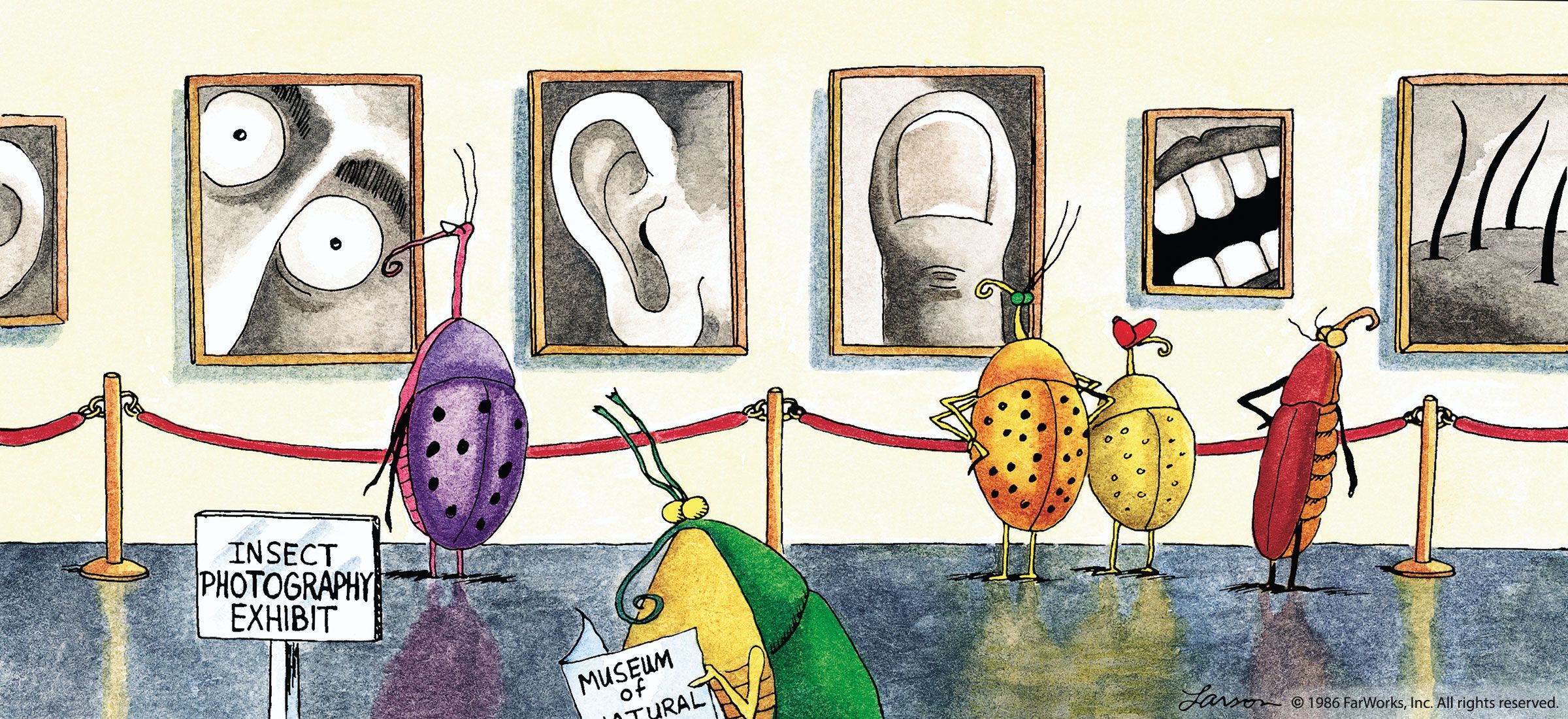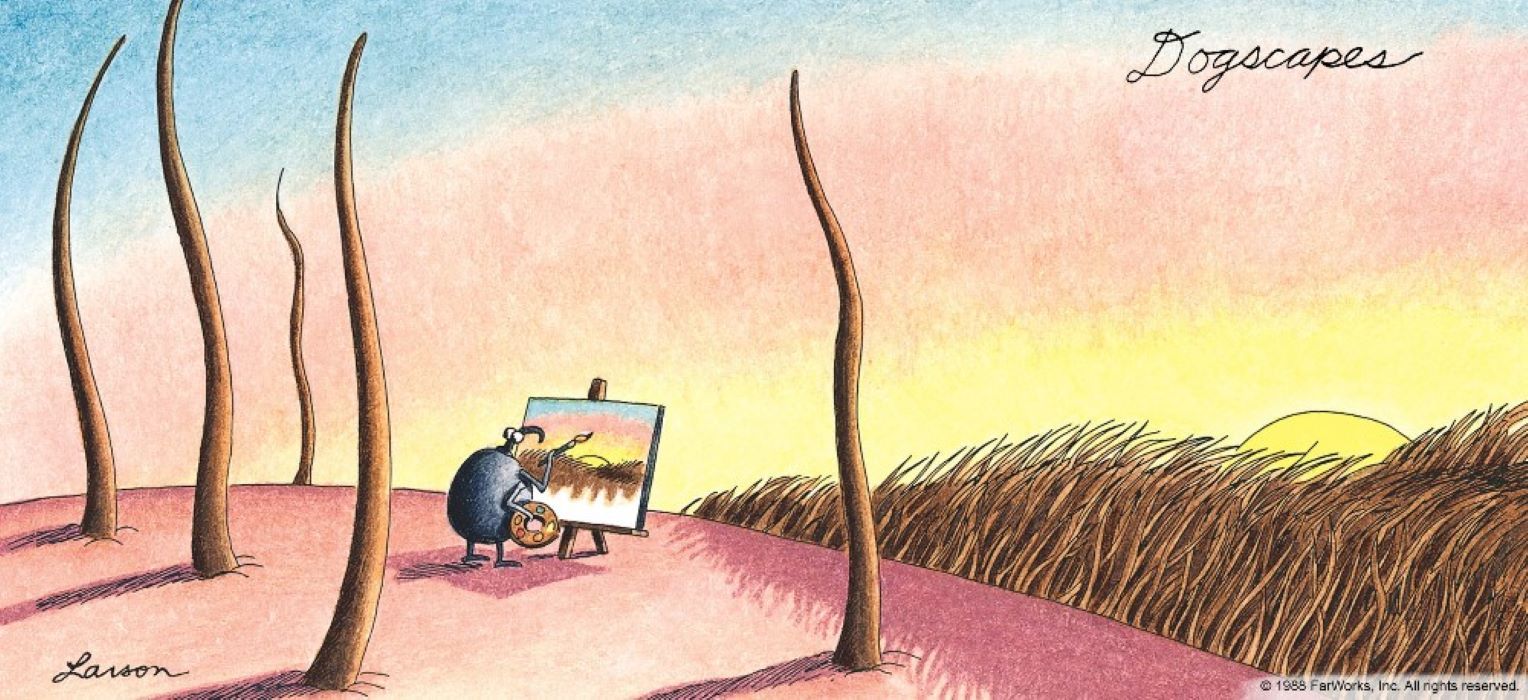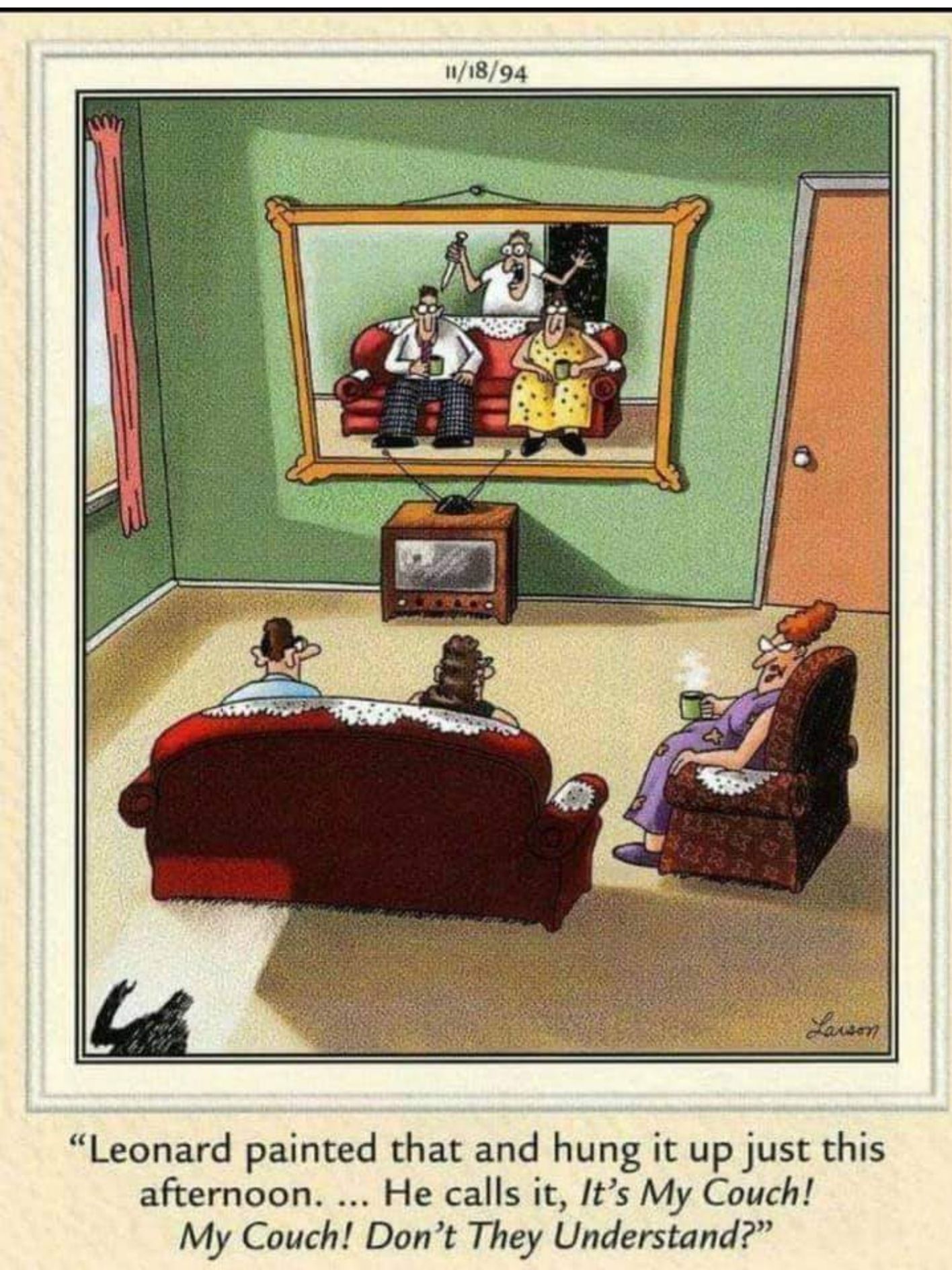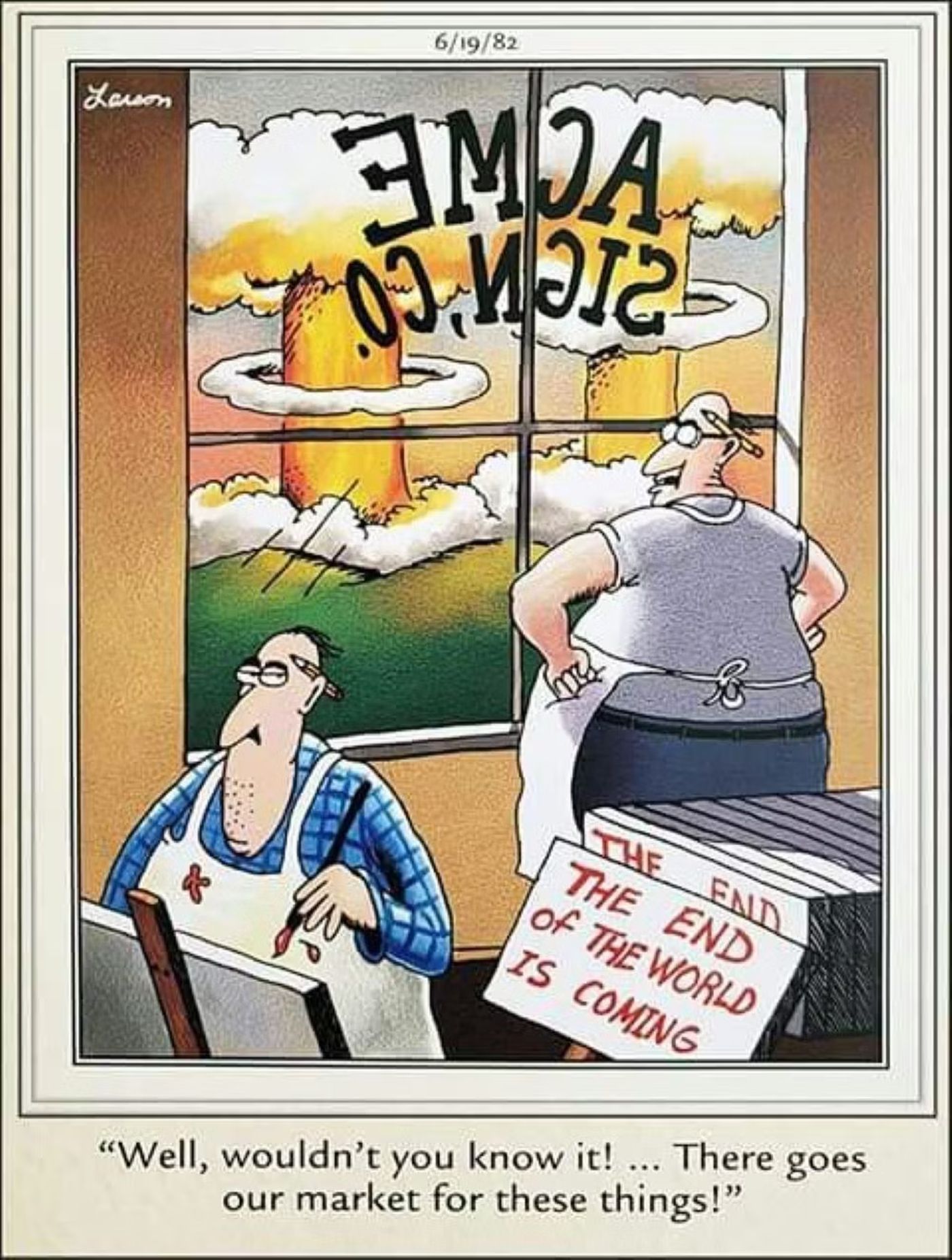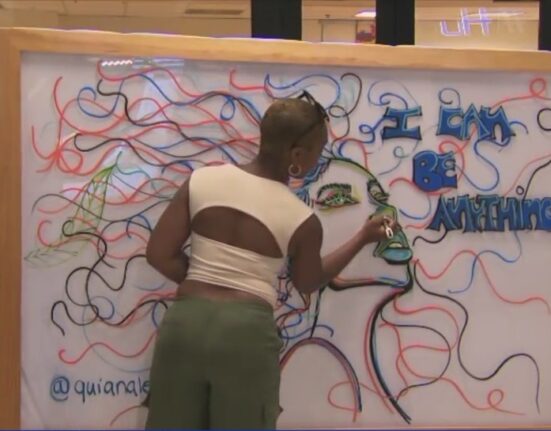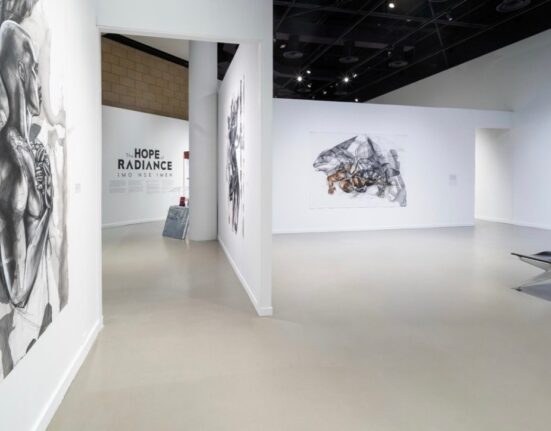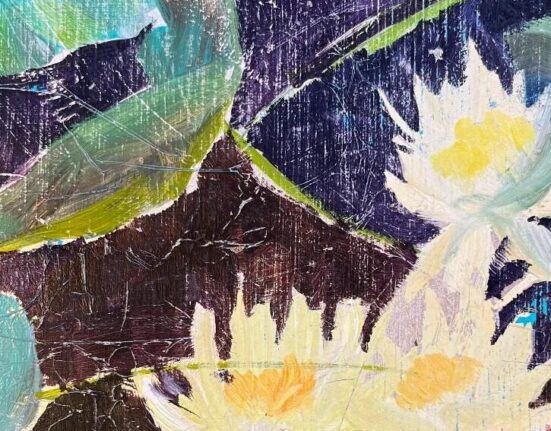Summary
- These Far Side comics hilariously highlight the strip’s irreverent treatment of art and artists, showing their flaws and shortcomings.
- Far Side creator Gary Larson playfully mock the concept of artistic value and subjective interpretation, suggesting that art should not be taken too seriously.
- Several of these Far Side comics creatively reimagine historical art and famous artists, providing whimsical and exaggerated origin stories for their works.
Art and artist are at some level inseparable, and, for Gary Larson’s The Far Side that always meant that both should be treated with irreverence. Any high-falutin’ artist would, of course, dread being brought back down to earth by Larson’s pen, and today, Screen Rant is counting down 10 of the most hilarious Far Side comics that put artists in their crosshairs.
Art has been at the forefront of human culture since the advent of civilization. Creative expression has been a veritable burning ember of the human soul, going back long before recorded history. In The Far Side however, it’s best not to take these matters too seriously, lest the responsibility the artist has toward envisioning, evoking and emboldening the spirit of humankind crush that person under the weight of their own ego. Art, as is often said, is subjective – and so is its value as a worthwhile thing, at least according to The Far Side, and the artist behind it, Gary Larson.
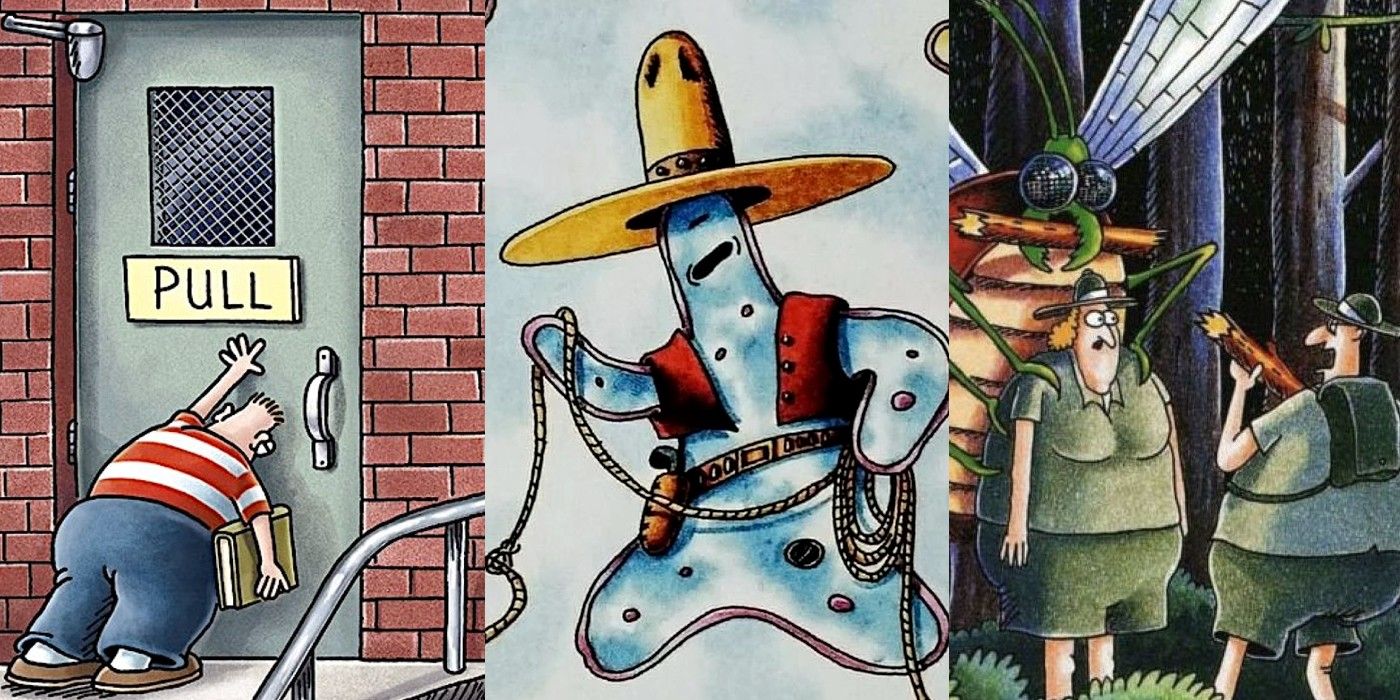
10 Far Side Comics With Intentionally Corny Punchlines
Throughout its newspaper run, Gary Larson’s The Far Side was always a prime showcase for intentionally corny (yet still hilarious) humor.
10 Bad Street Artist
March 7, 1988
In this gem of a panel, a normal, if not somewhat goofy-looking street artist sits on the corner of a street, in a city populated by smiley-faced people, favoring a sitting patron with a portrait in his patented style, as any street artist would. While presumably this customer is not blind, and thus knows what she’s going to get by soliciting this artist, the samples of work on display behind this artist do not bode well for the possibility of a sure likeness. Though, given the line of similarly appearing smiley-faced people waiting for this artist’s skillful rendering, perhaps it is simply the kind of renegade vision that is popular in smiley-face land.
9 St. George And The Wagon
March 3, 1982
There’s no shortage of dumb, corny jokes in The Far Side. Miscommunication is often at the heart of comedic chaos, and, as one medieval artist finds out, all it takes is one tiny error of interpretation to throw the entire canvas into disarray. Though Andre is hard at work on an epic portrait of a knight and his intrepid toy wagon, a sudden inquiry by a king’s messenger reveals he should have been painting the famous tale of St. George battling it out with a fearsome, scaled dragon. How he mistook “dragon” for “wagon”, who can say, but he clearly wasn’t familiar with the tale of how the great warrior slew the mighty mythical beast.
8 Sid’s Rentals
October 11, 1980
Emanuel Leutze’s 1851 painting “Washington Crossing the Delaware,” was a suitably epic depiction of the Revolutionary War story of the future first President and his fearless band of Colonial rebels making their surprise attack on Trenton. Though the painting serves as an inspirational and enduring hallmark touchstone of Americana, Larson here imagines the episode with considerably less gusto. The Far Side depicts Washington employing the age-old tactic of hiring a mercenary, in this case the suspiciously 20th-century sounding Sid of Sid’s Rentals, to ferry him across the river. Ironic, considering Washington’s foe would themselves be the mercenary Hessian troops employed by the British Empire.
Note: The event depicted, in which Washington crossed the Delaware River to surprise the British Army, driving them out of New Jersey, took place on Christmas Night of 1776.
7 Gus Nickerson’s Humble Origins
August 10, 1992
The Far Side imagines a struggling, brave young artist in this panel, one who simply hasn’t found his niche yet. This strip depicts the origin of the famous “dogs playing poker” painting. Painting after painting, attempt after attempt, Gus simply couldn’t find the right subject that would move his audience. That is until after chickens, monitor lizards, cockroaches and giraffes, somebody told him to try dogs. A wonderful tale, however, for the sake of veracity, it is worth nothing that the genius behind this concept, the painting, “A Friend in Need,” was not the invented “Gus Nickerson,” but in fact real-life artist Kash Koolidge.
6 Leonardo and the Horse
May 21, 1984
Artists can find their muses in the most unexpected places; for the famed Renaissance man Leonardo da Vinci, it appears the time has come for another masterpiece. While historically, Leonardo’s Horse was actually a statue commissioned by an Italian nobleman (and never completed), according to The Far Side, the famous series of studies he did on the animal was actually inspired by a random matchbook he had lying around. Capturing the vivid attention to detail, realistic anatomy, and perfect sense of lifelike movement Leonardo imbued in every work of art he set to task upon, Leonardo’s horse drawings stand the test of time as masterworks in their own right, with Larson spinning a whimsical origin story for them.
2:17
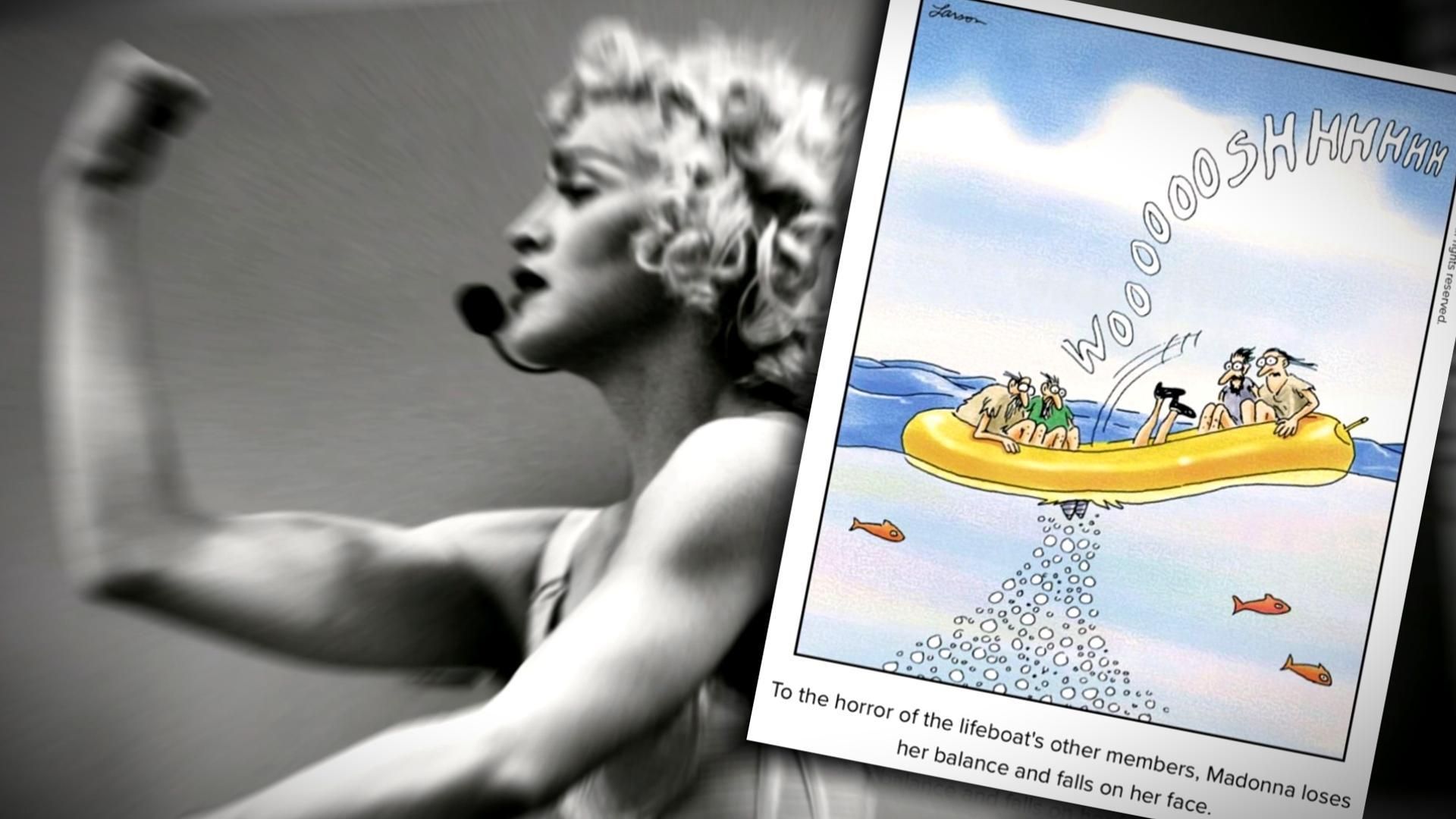
10 Funniest Far Side Comics That Make Fun of Real People
Gary Larson’s The Far Side is known for its surreal sense of humor and often morbid subject matter, but there were times it took on celebrities.
5 Insect Photography Exhibit
July 6, 1986
Art, like beauty, can sometimes seem to be something seen only through the eye of the beholder. Unfortunately for much of the field of modern photography, Larson decides to take dead aim at the concept of this field possessing value as high art. With simple, yet devastating exactitude, The Far Side takes the sadly prescient stance that photography has declined as an artistic discipline, to the point where its exhibitions resemble random, garbled, out of focus snapshots, usually featuring irritated or ill-tempered subjects. While immersing one’s audience in a realism-based sense of alienation can be an artistically viable tactic, Far Side’s “Insect Photography Exhibit” appears to suggest an inherit vaingloriousness to the practice.
4 The Curse of “Artist’s Block”
April 19, 1991
This Far Side entry illustrates the torturous condition of “artist’s block” in farcical fashion. A play on the well-publicized problem of “writer’s block,” artist’s block is brought to life as a hellish torment in this panel. Unable to conceive of the proper way to finish the work, the afflicted craftsman is condemned to mentally run himself in circles, going through every possible answer to the question, only to end in exhaustion – and eventually, madness. Of course, in real life, such a condition would likely involve more weighty matters, and not entail an artist caught in a quandary over what kind of animal’s head should go on a cow’s body.
3 Dogscapes
October 23, 1988
The practice of painting landscapes is among the most time-honored traditions of the art. Here, The Far Side presents the analogous practice of “dogscapes.” Presumably undertaken by the parasites which infest the dog, such as ticks and fleas, dogscapes are an attempt by the insectoid artist to capture the ineffable beauty of the natural world. For their human counterparts, this usually comprises the planet earth itself, in this case it only encompasses a body no larger than the canine the tiny insect currently dwells upon. In this way, Gary Larson perhaps makes a statement on the relative nature of an artist’s sphere of existence; or alternatively, maybe just a reminder to regularly check one’s pets for such pests.
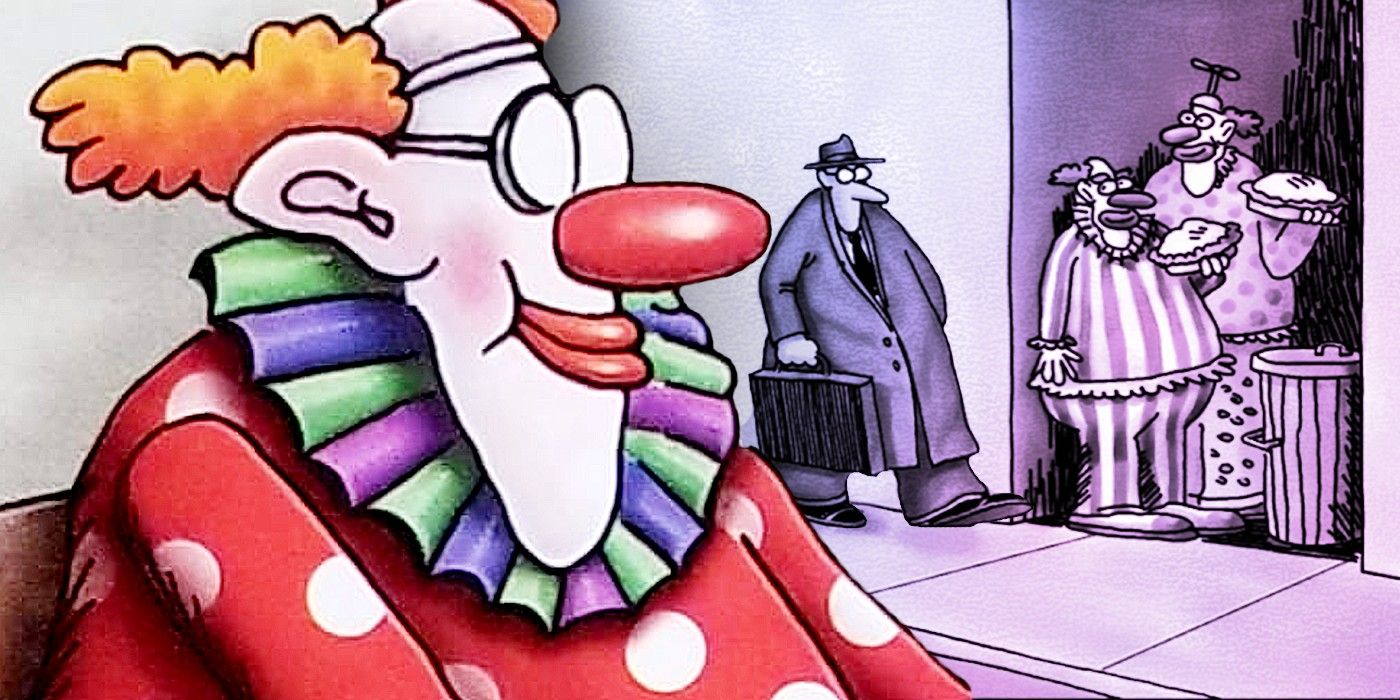
12 Funniest Far Side Comics That Prove It’s Obsessed with Clowns
The Far Side’s mix of surreal and morbid humor makes clowns its perfect ‘heroes’ – and Gary Larson proves it in these 10 comic strips.
2 It’s My Couch
November 18, 1994
The woman in this Far Side strip seems a tad too nonchalant in describing the day’s events. “Leonard painted that and hung it up just this afternoon,” she says, referring to a large painting of herself and her husband sitting on their living room couch, as Leonard appears behind them wielding a knife. “He calls it, It’s My Couch! My Couch! Don’t They Understand?” she explains, seemingly unfazed by the implicit threat. In a brilliant touch, a vague shadow appears in the bottom left corner of the frame, seemingly Leonard sneaking up on them with a knife, just as the painting indicated.
1 ACME Sign Co.
June 19, 1992
In the best Far Side poking fun at artists, nuclear armageddon ruins the Acme Sign Company’s market for “The End of the World is Coming” signs. Rather than products of paranoid minds, Larson imagines these signs as another commodity, one that is contingent on the world remaining in a state of imminent destruction, while never actually ending. A true artist, the beleaguered Acme sign-painter receives the news of his losing the market, heralded by the actual end of the world, with a glance of stoic indifference, underscored with perhaps a dash of irritated disappointment. Such is the fate of any commercial artist, after all.

